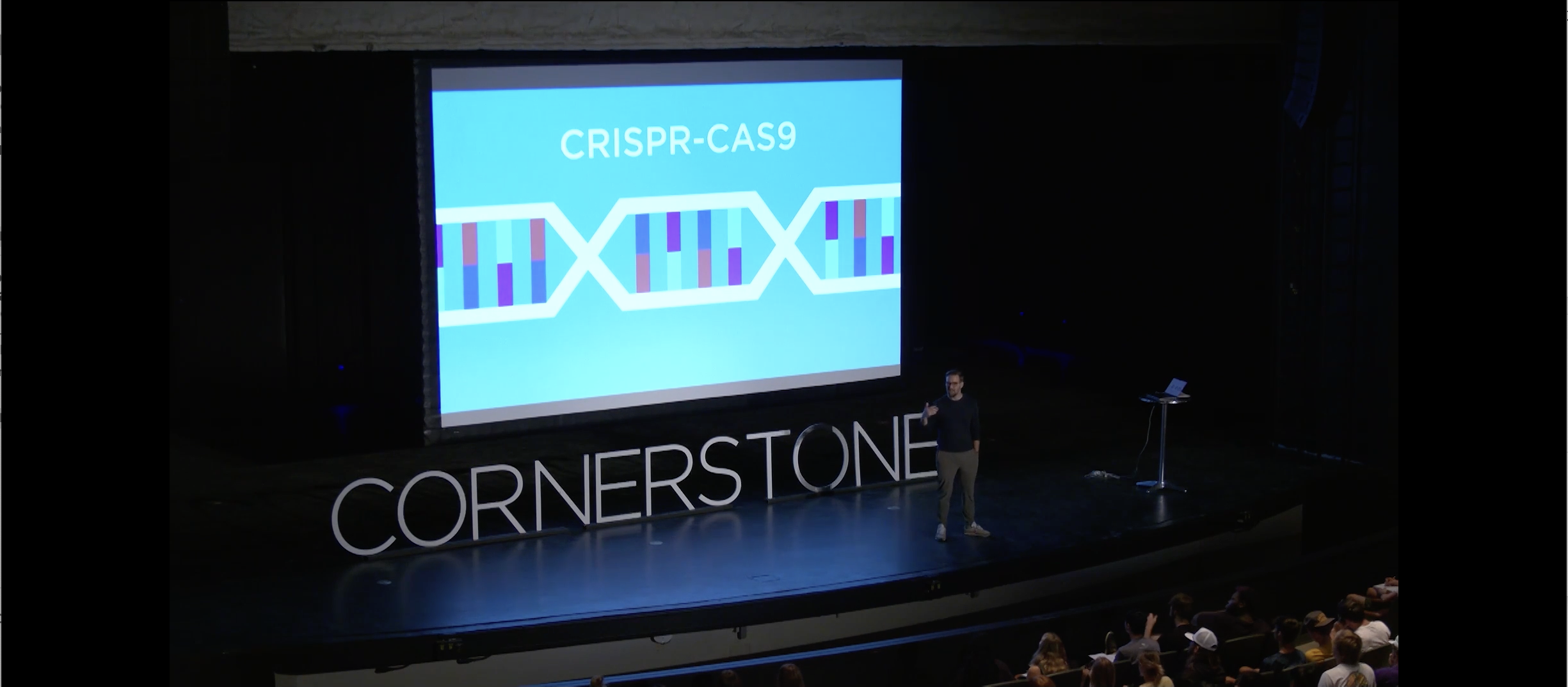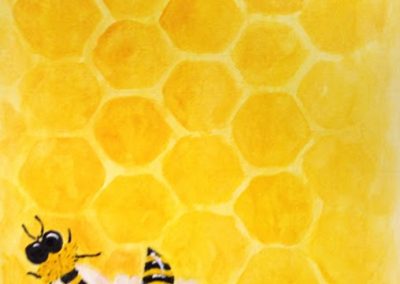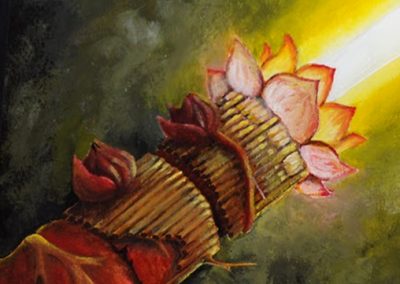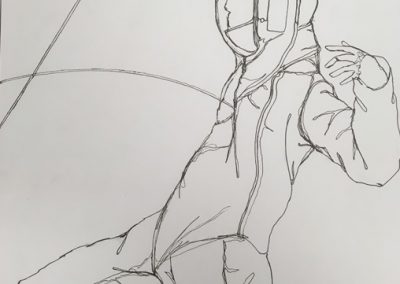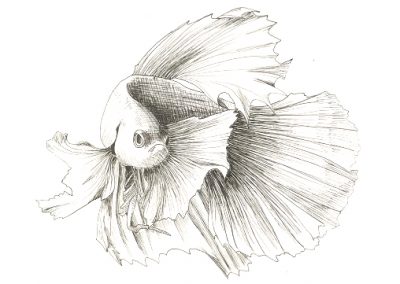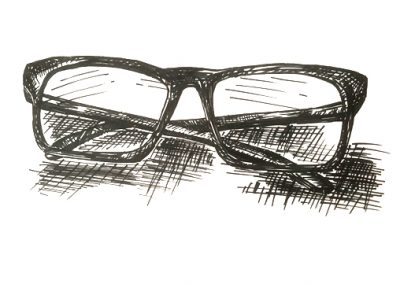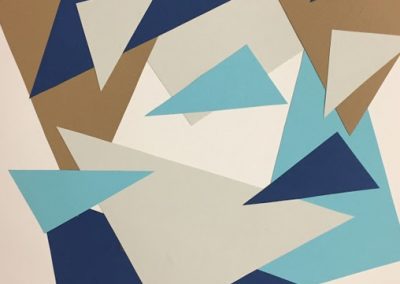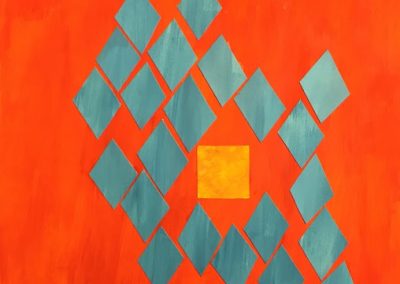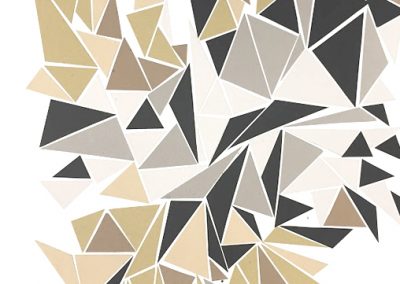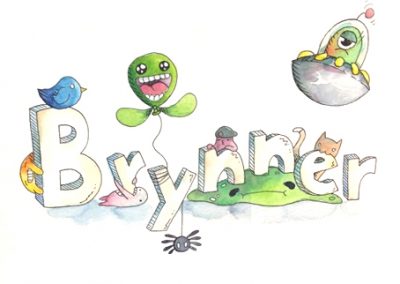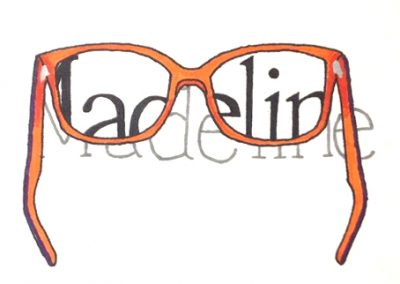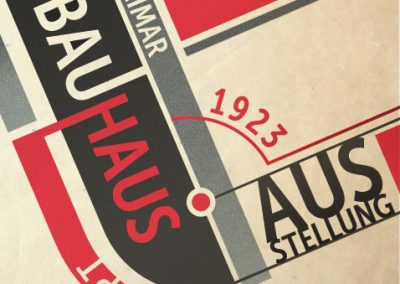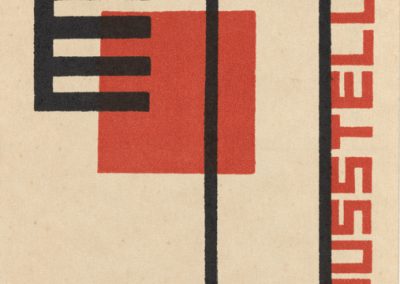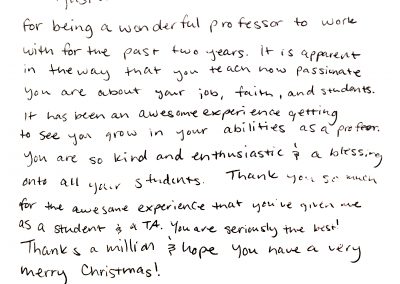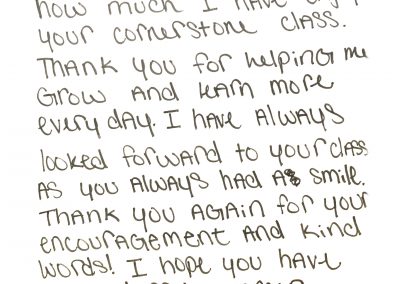University Requirements
According to the ACU Faculty Handbook:
In addition to reflections on teaching and on the integration of faith and learning, the portfolio could contain, but is not limited to, the following items:
Teaching Assignments
Student Work Samples
Unsolicited Student Evaluations
Teaching Awards
Teaching Assignments
COURSES TAUGHT
Abilene Christian University // 2013-Present
-
- ART 105: Two-Dimensional Design
- ART 221: Art History General Survey I
- ART 221: Art History General Survey II
- ART 440: Graphic Design History
- CORE 110: Cornerstone
- CORE 210: Human Identity and Community
- CORE 310: The Search for Meaning
- Honors Colloquium: Think Wrong // Spring 2016
- Honors Colloquium: Escape the Classroom // Spring 2019
- Honors Colloquium: Propaganda // Spring 2019
- Honors Colloquium: Escape the Classroom // Spring 2022
Wayland Baptist University // 2011-13
-
- Art History General Survey I
- Design I
- Design II
- Graphic Design I (Print Design, Digital Imaging, Photoshop)
- Graphic Design II (Illustration, Logo Design)
- Graphic Design III (Web Design, Advertising)
- Graphic Design Internship
- Graphic Design History
- Typography & Branding
Lubbock Christian University // 2008-2011
-
- Fundamentals of Design
CO-TEACHING EXPERIENCE
Courses Co-Taught
-
- Victor McCracken – The Search for Meaning // Fall 2013
- Cliff Barbarick – The Search for Meaning (2 sections) // Spring 2014
- Houston Heflin – Human Identity // Spring 2014
- Jeanine Varner – The Search for Meaning // Fall 2014
- Paul Morris – The Search for Meaning // Spring 2015
- Curt Niccum – The Search for Meaning // Spring 2015
- Rodney Ashlock – Human Identity and Community // Spring 2015
- Victor McCracken – Human Identity and Community // Fall 2015
- Cliff Barbarick – The Search for Meaning // January 2016
- Nil Santana – Honors Colloquium: Think Wrong // Spring 2016
- Cliff Barbarick – The Search for Meaning (2 sections) // Spring 2016
- Amy McLaughlin-Sheasby – The Search for Meaning // Spring 2016
- Cliff Barbarick – The Search for Meaning // Summer 2016
- Kyle Dickson – Honors Colloquium: Escape the Classroom // Spring 2019
- Ronnie Rama – Honors Colloquium: Propaganda // Spring 2020
- Mike Wiggins – Two-Dimensional Design // Fall 2020
- Kyle Dickson – Honors Colloquium: Escape the Classroom // Spring 2022
Curriculum Development
Abilene Christian University
-
- CORE 110: Cornerstone // Directed 2016-2022
- ART 440: Graphic Design History // New Course Design
- ARTO 221: Art History General Survey I // Online Course Design, Spring 2021
- ARTO 222: Art History General Survey II // Online Course Design, Spring 2022
Wayland Baptist University
-
- Graphic Design I (Print Design, Digital Imaging, Photoshop) // New Course Design
- Graphic Design II (Illustration, Logo Design) // New Course Design
- Graphic Design III (Web Design, Advertising) // New Course Design
- Graphic Design Internship // New Course Design
- Graphic Design History // New Course Design
- Typography & Branding // New Course Design
Image of me standing on the stage in Boone Auditorium, speaking about Crispr-CAS9 and the ethics of human gene editing to freshman in my annual Cornerstone Spotlight Presentation. I have given this presentation every year since 2016. (Click here or the image for link to presentation video.)
Student Work Samples
ART 105: TWO-DIMENSIONAL DESIGN
2D Design is a Foundations class that every art major, regardless of concentration, is required to take. The course focuses on the fundamental elements of art, principles of design, and creative processes involved in making art. Objectives for the course include teaching students how to look at art, breaking artworks down according to their compositional characteristics, helping students improve their artistic vocabulary by using terms specific to the visual arts, and exploring new approaches to creating art by focusing primarily on form rather than content. To see an overview of the basic terms and ideas presented in the course, see the following Form Decoder that I use in my classes developed with the help of Kenny Jones.
Over the semester, students engage in a wide array of “exercises” intended to expose them to different media, train them in the creation of strong compositions based on the characteristics of form, and familiarize them with different terms and concepts in visual art. Below are a few examples of student works created for my 2D Design classes that exemplify high-levels of student performance.
ART 440: GRAPHIC DESIGN HISTORY
For an upper level art class like Graphic Design History, where all of the students are art majors and the vast majority are graphic design majors, merely asking them to write about an artwork simply isn’t enough. They also need to understand the processes, both technical and theoretical, that underpin the work. Emphasizing the latter, I now include an assignment that asks students to write a research paper over a designer, movement, or particular work from the course and then design a work in the same style as the object of their research.
I thought it would be fun to play a game. Below, I have provided three images. Two are famous works from our graphic design history course and the third is a student work created in the style of the Bauhaus, a post Great War German art school well known for its minimalist, geometric approach to design and innovative teaching theories. Choose from the three designs below which image you believe is the imposter.
The correct answer is the first one. Highlight the text before this sentence to learn the correct answer.
The student met the parameters of the assignment, but more importantly, in the work he created you can see that he internalized the principles of Bauhaus graphic design. From his color palette to his geometrical layout to his typography he successfully reproduces the style.
Teaching Awards
-
- ACU Volleyball Guest Coach // Spring 2017
- ACU Women’s Basketball Guest Coach // Fall 2016
- Excellence in Mentoring Award // Spring 2015
Unsolicited Student Evaluations
Below is a brief sampling of a few of the unsolicited notes I have received from students over the years.
Dr. Shirley,
I just wanted to thank you for always coming to class looking to improve your students. I have benefited so much from taking your class. I always find myself writing all of my papers as if they are the annotated bibliography. I know that if I can write my papers to a standard that you would grade as an A, I am writing a quality paper.
Thanks again,
Ethan Epinette, 2018
Syllabi
Student Evaluations
Sample Evaluations:
In my opinion, course evaluations are helpful tools for identifying areas of strength and improvement but are also limited as assessments of student learning. As a tool for improvement, I use evaluations each semester to find ways to strengthen my classes. Often in the qualitative section, I find helpful comments that are useful tips for improving the classroom experience.
Examples from Art Courses
For example, in my Spring 2015 evaluation for Art History General Survey II, a student pointed out that, “the lessons where [I] had the students debating/discussing at the beginning were the most effective.” This was an encouraging comment because this was something that I had worked hard to incorporate into the class. Since my first semester of teaching art history courses, I have struggled with a tendency to lecture too much and have sought out more interactive and engaging methods of content delivery. During this semester, I made a point to discuss more issues related to art theory (What is art? What is kitsch? How does medium change the way we value an artwork? Why do inanimate objects have so much power over us? etc.) which led to a number of lively classroom discussions.
Another example from my fall 2015 Art History course similarly encouraged me in my course changes. During this semester, I transferred the course over to a low-stakes testing method (discussed above). Based on the comments, it appears that students appreciated the change and recognized the learning goals that it set out to achieve. One student wrote,
“Professor Trey Shirley obviously cares about his students and presents and tests over his material in such a way that it is very successful and I actually retain the information instead of forgetting it after being tested. Very willing to answer questions and help his students in any way that can benefit them.” ART 221.01, Fall 2015
This is all part of my larger goal of making the course about more than art; at its best, it is a course that engages students at multiple levels, challenging them to rethink the way we learn history, inviting them to establish their own definitions of and methods for evaluating artworks, and giving them greater insight into the human condition. As one student wrote:
“I took art history because I wanted to become more cultured; this course however, gave me a stronger appreciation of the arts because it is not an easy A, nor an easy course. I kind of expected the course work to be less strenuous, but to my surprise there is a lot more to learn about Art than I anticipated. The course also made me look at history differently because I knew art was an integral piece of the past, but I was not aware of the immense detail that could reveal so much about a society, and the scholarship required to make detailed assumptions.” ART 221.01, Fall 2015
And another:
“I appreciated the passion that you demonstrated for the course work. As a non-art major I learned a lot and was able to analyze better. I think I finally get “it” the importance and the power of art. This has been my favorite class by far this semester. I look forward to possibly having another class with this professor.” ART 222.01, Spring 2016
Examples from Core Classes
Since my time at ACU has been split between teaching in the Department of Art and Design and General Education, one of the primary reasons I was hired had to do with my ability to be conversant in multiple disciplines. This involved pairing teachings from philosophy, history, behavioral psychology, biblical studies, art and design, and a wide array of other disciplines into cohesive narratives that challenged students academically, morally, and spiritually, but also left room for them to share their own opinions. Below are a few of comments that I believe speak well to my ability to convey these principles:
“Dr. Shirley genuinely cares about us as his students. He is approachable, intelligent, and humble. I genuinely enjoyed being his student this semester. What I loved about both Shirley and Sheasby is that they did not simply “stir the pot” just to anger or upset people. Every conversation was well-introduced and as a result, the class genuinely enjoyed discussing and even disagreeing with each other. This classroom environment is one of the best I’ve ever had the privilege to be a part of. I am encouraged to embrace others’ beliefs with respect, honesty, and love. This course gave me the freedom to explore topics I honestly would have a hard time doing by myself, because I knew I had the covering of genuinely loving professors who had gone before me to lead me with honesty and with gentleness.” BCOR 340.01, Spring 2016, McLaughlin-Sheasby/Shirley
“Honestly, there was a wonderful blend of ethos, pathos, and logos in our discussions and in the lectures – as it should be, I suppose, in such a class as this. All the different ideas were wonderfully and thoroughly presented, and the discussion questions were thought-provoking. Thank you for not keeping such a tight hold on the legalities of the classroom, and for letting discussions and participation be rather abstract.” CORE 310.02, Fall 2014, Varner/Shirley
“Dr. Shirley was very nuanced in his discussion of class subjects, he had a broad base of knowledge that made the class inter-disciplinary in its execution.” BCOR 340.J1, January 2016, Barbarick/Shirley
“He was open to questions and really cared that his students understand the material that he covered. He was also understanding and very gracious when people came to him in times of need. He was clear, informative, and really cared about the subject in his lectures.” Art 222.01, Spring 2015
“It is clear that he has a passion for what he is teaching and enjoys doing what he is doing. Dr. Shirley made learning in the class interactive and fun. He understands that all students are different and tries to implement that in his lessons and expectations of students. He used many different ways of teaching to help all students gain knowledge. If a student puts in the work, this house is stress-free and enjoyable. It is evident that Dr. Shirley cares for his students and their well-being.” ART 221.01, Fall 2015
“Benevolence and understanding when dealing with students and a fair approach to every student’s work as well as when providing critique. Dr. Shirley regularly builds off of points students make and compliments them on their thought process, rather than focusing on inaccuracies that are sometimes suggested in discussion.” ART 221.01, Fall 2015
For a link to all course evaluations, click below:
Directed Student Scholarship
Directed Student Scholarship
Emma Harper, Alpha Chi Honor Society National Convention // 2023
Yunru Shen, Alpha Chi Honor Society National Convention // Spring 2023
Evan Babb, Alpha Chi Honor Society National Convention // Spring 2023
Ashlee Reed, Alpha Chi Honor Society National Convention // Spring 2023
*Ashlee’s presentation was the winner in her category at the competition
Jared Yanez, Alpha Chi Honor Society National Convention // Spring 2023
Skyler Gill, Alpha Chi Honor Society National Convention // Spring 2023
Ashlee Reed, Jared Yanez, and Sklyer Gill, Alpha Chi Honor Society National Convention // Spring 2023
Jonna White, McNair Scholar Mentor // Spring 2023
Ashley Lang, Poster Competition, ACU Undergraduate Research, Innovation, and Creativity festival // Spring 2022
*Ashley’s poster was the winner for the Arts and Humanities Poster Competition
Rebekah Conder, Poster Competition, ACU Undergraduate Research, Innovation, and Creativity festival // Spring 2022
Sonia Seguin, Poster Competition, ACU Undergraduate Research, Innovation, and Creativity festival // Spring 2022
Ashley Lang and Sonia Seguin, Arts and Humanities Top Scholars Presentation, ACU Undergraduate Research, Innovation, and Creativity Festival // Spring 2022
Courtney White, Poster Competition, ACU Undergraduate Research, Innovation, and Creativity festival // Spring 2022
Julia Teel, Abilene Christian University, Senior Thesis Advisor // Spring 2018
Julia Teel, Abilene Christian University, ACU Undergraduate Research Festival // Spring 2018
Faith Moore, ACU Undergraduate Research Festival // Spring 2016
Audrey Kinzinger, ACU Undergraduate Research Festival // Spring 2016
Ashley McHam, Lubbock Christian University, Student Show Advisor // Spring 2010
Heather Fittz, Lubbock Christian University, Student Show Advisor // Spring 2007
NEXT:
Teaching Departmental Requirements
Welcome
Summary
Curriculum Vitae
Support Materials
I. Teaching
Reflection on Teaching Effectiveness
University Requirements
Departmental Requirements
II. Scholarship
Reflection on Scholarship
Scholarship Inventory
Scholarship Highlights
III. Service
University Requirements
Departmental Requirements
IV. Collegiality
Reflection on Collegiality
Significant Partnerships and Collaborations

